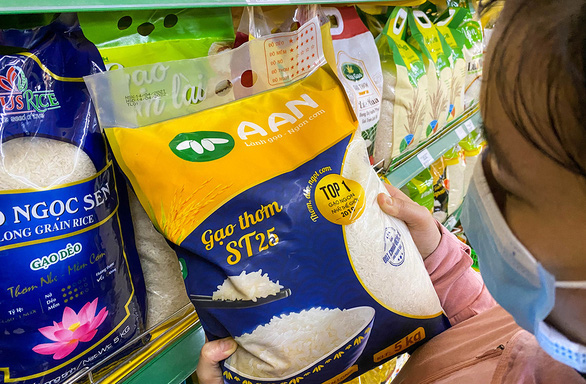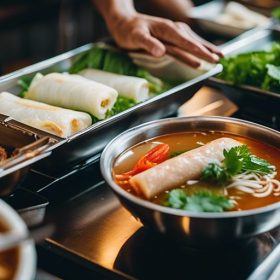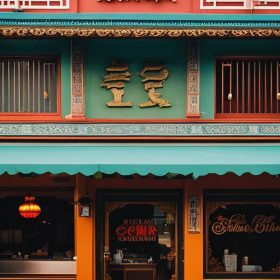In recent years, there has been growing concern among consumers about the safety and quality of imported Vietnamese food. These concerns stem from various factors, including reports of foodborne illnesses linked to imported products, lack of transparency in the supply chain, and cultural differences in food handling practices. It is important to address these concerns to ensure the safety and satisfaction of consumers who enjoy Vietnamese cuisine.
Consumers have the right to know that the food they are purchasing is safe and meets quality standards. With the increasing globalization of the food industry, it is crucial to have a robust regulatory framework in place to ensure that imported Vietnamese food meets these standards. By addressing these concerns, we can help build trust between consumers and the food industry, and promote the growth of the Vietnamese food market.
The Regulatory Framework for Imported Vietnamese Food
The regulatory framework for imported food in general is designed to protect consumers from potential health risks associated with unsafe or contaminated products. This framework includes various regulations and standards that importers must adhere to before their products can be sold in the market.
Specific regulations for imported Vietnamese food may vary depending on the country of import. However, there are common requirements that importers must meet, such as obtaining import permits, complying with labeling requirements, and undergoing inspections by regulatory authorities. These regulations are in place to ensure that imported Vietnamese food meets safety and quality standards.
The regulatory framework also includes measures to prevent the entry of unsafe or contaminated products into the market. This includes border controls, laboratory testing, and traceability systems that allow authorities to track the origin of imported products. These measures help ensure that only safe and high-quality Vietnamese food reaches consumers.
The History and Culture of Vietnamese Cuisine
Vietnamese cuisine has a rich history that dates back thousands of years. It is influenced by various factors, including geography, climate, and cultural traditions. The cuisine is known for its fresh ingredients, vibrant flavors, and balance of flavors.
Food holds great cultural significance in Vietnam. It is not just a means of sustenance, but also a way to connect with family and friends, celebrate special occasions, and preserve cultural traditions. Vietnamese people take great pride in their cuisine and its unique flavors.
The cultural significance of food in Vietnam also influences the types of food that are imported. Vietnamese cuisine is known for its use of fresh herbs, vegetables, and seafood. These ingredients are often imported to ensure that the authentic flavors of Vietnamese dishes can be recreated outside of Vietnam.
The Common Misconceptions about Imported Vietnamese Food
There are several common misconceptions about imported Vietnamese food that need to be addressed. One misconception is that all imported Vietnamese food is unsafe or of low quality. While there have been isolated incidents of foodborne illnesses linked to imported products, it is important to note that these incidents are rare and do not represent the overall safety of imported Vietnamese food.
Another misconception is that imported Vietnamese food is not authentic. Some consumers believe that only food made in Vietnam can truly capture the flavors and essence of Vietnamese cuisine. However, many importers work closely with Vietnamese suppliers to ensure that their products meet the same standards as those sold in Vietnam.
It is also important to debunk the misconception that all imported Vietnamese food is unhealthy. While some dishes may be high in fat or sodium, there are many healthy options available, such as fresh herbs, vegetables, and lean proteins. It is up to consumers to make informed choices and select healthier options when purchasing imported Vietnamese food.
The Reality of Food Safety in Vietnam
Food safety is a complex issue in Vietnam, with various challenges faced by the government in ensuring the safety of the food supply chain. These challenges include inadequate infrastructure, limited resources for inspections and testing, and cultural practices that may increase the risk of contamination.
The Vietnamese government has made efforts to improve food safety in recent years. This includes implementing stricter regulations, increasing inspections and testing, and providing training and education to food handlers. However, there is still work to be done to ensure that all food produced and imported in Vietnam meets safety standards.
These challenges also impact imported Vietnamese food. Importers must work closely with their suppliers to ensure that the products they import meet safety standards. This includes conducting regular audits of suppliers’ facilities, testing products for contaminants, and implementing traceability systems to track the origin of imported products.
The Role of the Vietnamese Government in Ensuring Food Safety
The Vietnamese government plays a crucial role in ensuring the safety of imported Vietnamese food. They are responsible for setting and enforcing regulations that govern the importation and production of food. This includes conducting inspections and testing, issuing import permits, and providing training and education to food handlers.
The government has also implemented measures to improve the safety of the food supply chain. This includes strengthening border controls to prevent the entry of unsafe or contaminated products, increasing inspections and testing at food production facilities, and implementing traceability systems to track the origin of imported products.
In addition, the government works closely with other countries and international organizations to share information and best practices in food safety. This collaboration helps ensure that imported Vietnamese food meets international standards and is safe for consumption.
The Responsibility of Importers and Distributors in Ensuring Food Safety
Importers and distributors also play a crucial role in ensuring the safety of imported Vietnamese food. They are responsible for selecting reputable suppliers, conducting regular audits of their facilities, and testing products for contaminants.
Importers and distributors must also comply with labeling requirements and provide accurate information about the origin and ingredients of their products. This helps consumers make informed choices about the food they purchase.
In addition, importers and distributors must have proper storage and handling practices in place to prevent contamination or spoilage of their products. This includes maintaining proper temperature controls, implementing pest control measures, and regularly inspecting their facilities for any potential hazards.
The Importance of Proper Handling and Storage of Imported Vietnamese Food
Proper handling and storage of imported Vietnamese food is crucial to ensure its safety and quality. Improper handling and storage can lead to contamination or spoilage of the products, which can pose health risks to consumers.
Importers and distributors must ensure that their products are stored at the correct temperature to prevent the growth of bacteria or other pathogens. They must also implement proper hygiene practices, such as regular handwashing and sanitizing of equipment, to prevent cross-contamination.
Consumers also have a role to play in ensuring the safety of imported Vietnamese food. They should follow proper handling and storage guidelines provided by importers and distributors, such as refrigerating perishable items promptly and cooking food to the recommended internal temperature.
The Benefits of Imported Vietnamese Food: Nutrition and Taste
Imported Vietnamese food offers several benefits in terms of nutrition and taste. Vietnamese cuisine is known for its use of fresh ingredients, such as herbs, vegetables, and seafood, which are rich in vitamins, minerals, and antioxidants.
The cuisine also emphasizes balance and harmony in flavors, with dishes often combining sweet, sour, salty, and spicy elements. This balance of flavors not only makes Vietnamese food delicious but also provides a unique taste experience for consumers.
Imported Vietnamese food also offers a wide variety of options for consumers with different dietary preferences or restrictions. There are many vegetarian and vegan options available, as well as gluten-free and dairy-free options.
The Future of Imported Vietnamese Food: Trends and Developments
The future of imported Vietnamese food looks promising, with several trends and developments shaping the industry. One trend is the increasing demand for organic and sustainably sourced products. Consumers are becoming more conscious about the environmental impact of their food choices and are seeking out products that are produced in an environmentally friendly manner.
Another trend is the growing popularity of street food. Vietnamese street food is known for its bold flavors and affordable prices, making it a favorite among locals and tourists alike. Importers are capitalizing on this trend by bringing popular street food items to international markets.
There is also a growing interest in regional Vietnamese cuisine. Each region in Vietnam has its own unique culinary traditions and flavors. Importers are exploring these regional cuisines and bringing lesser-known dishes to the international market.
Making Informed Choices about Imported Vietnamese Food
In conclusion, it is important to address the concerns surrounding imported Vietnamese food to ensure the safety and satisfaction of consumers. The regulatory framework for imported food, along with the efforts of the Vietnamese government and importers, helps ensure that imported Vietnamese food meets safety and quality standards.
Consumers can make informed choices about imported Vietnamese food by understanding the regulatory framework, debunking common misconceptions, and following proper handling and storage guidelines. By doing so, they can enjoy the nutritional benefits and unique taste experiences that imported Vietnamese food has to offer.
It is also important for consumers to support reputable importers and distributors who prioritize food safety and quality. By choosing products from trusted sources, consumers can have confidence in the safety and authenticity of the imported Vietnamese food they purchase.

Cuong Nguyen is a talented writer and experienced waitress at Vietnampalace.net, a renowned Vietnamese restaurant that offers an extensive menu of authentic Vietnamese cuisine. With a background in the competition of Vietnamese cuisine, Cuong brings a wealth of knowledge and expertise to the dining experience. From delicious pho dishes to fresh spring rolls, Cuong ensures that every meal is made with the freshest ingredients and authentic flavors.With exceptional service and a friendly atmosphere, Cuong takes pride in providing a memorable dining experience for every customer.
Whether you’re a vegetarian looking for options or a meat lover craving the flavors of traditional Vietnamese dishes, Cuong guarantees a delightful culinary adventure. So, visit Vietnampalace.net and let Cuong guide you through the tantalizing world of Vietnamese cuisine.



